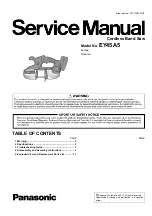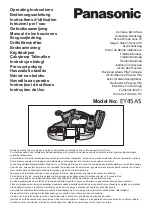
Getting
08
Getting started...
ENB539TAS by Energer
Technical and legal
information
Additional safety
> The bench-type circular saw is designed for the slitting and cross-cutting of all
types of timber, commensurate with the machine’s size. The machine is not to be
used for cutting any type of round wood.
> The machine is to be used only for its prescribed purpose.
> Any use other than that mentioned is considered to be a case of misuse. The
user/operator and not the manufacturer shall be liable for any damage or injury
resulting such cases of misuse. The machine is to be operated only with suitable
saw blades. It is prohibited to use any type of cutting-off wheel.
> Use only saw blades recommended by the manufacturer, which confirm to EN
847-1, with a warning. When changing the saw blade, beware that the thickness of
the body of the saw blade shall not be more than the thickness of the splitter
(riving knife).
> Take care that the selection of the saw blade is suitable for the material to be cut.
> To use the machine properly you must also observe the safety regulations, the
assembly instructions and the operating instructions to be found in this manual.
> All persons who use and service the machine have to be acquainted with this
manual and must be informed about its potential hazards.
It is also imperative to observe the accident prevention regulations in force in your
area.
> The same applies for the general rules of occupational health and safety.The
manufacturer shall not be liable for any changes made to the machine nor for any
damage resulting from such changes.
>
Even when the machine is used as prescribed it is still impossible to eliminate
certain residual risk factors. The following hazards may arise in connection with
the machine’s construction and design:
>
Contact with the saw blade in the uncovered saw zone.
• Reaching into the running saw blade (cut injuries).
• Kick-back of workpieces and parts of workpieces.
• Saw blade fracturing.
• Catapulting of faulty carbide tips from the saw blade.
• Damage to hearing if essential ear-muffs are not worn.
• Harmful emissions of wood dust when the machine is used in closed rooms.
>
Please note that our equipment has not been designed for use in commercial,
trade or industrial applications.Our warranty will be voided if the machine is used
in commercial, trade or industrial businesses or for equivalent purposes.
>
Wear suitable personal protective equipment when necessary, this could include
a) Hearing protection to reduce the risk of induced hearing loss.
b) respiratory protection to reduce the risk of inhalation of harmful dust.
c) wear gloves when handling saw blades and rough material. Saw blades shall be
carries in a holder whenever practicable.
>
Connect circular saws to a dust-collecting device when sawing wood. The
operator shall be informed of the factors that influence exposure of dust e.g. type
of material being machined and importance of local extraction (capture or
source) and proper adjustment of hoods/baffles/chutes.
GB
IE










































